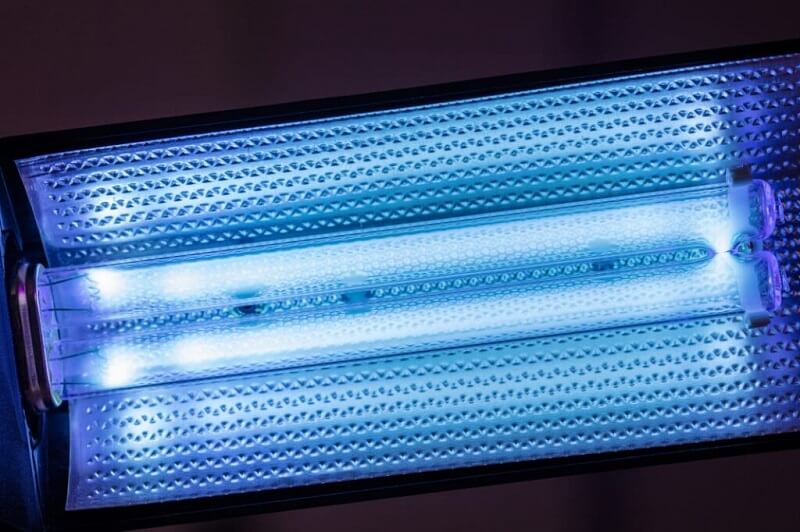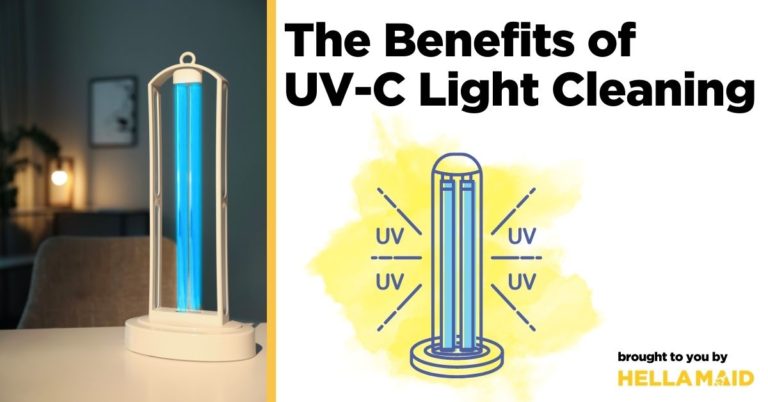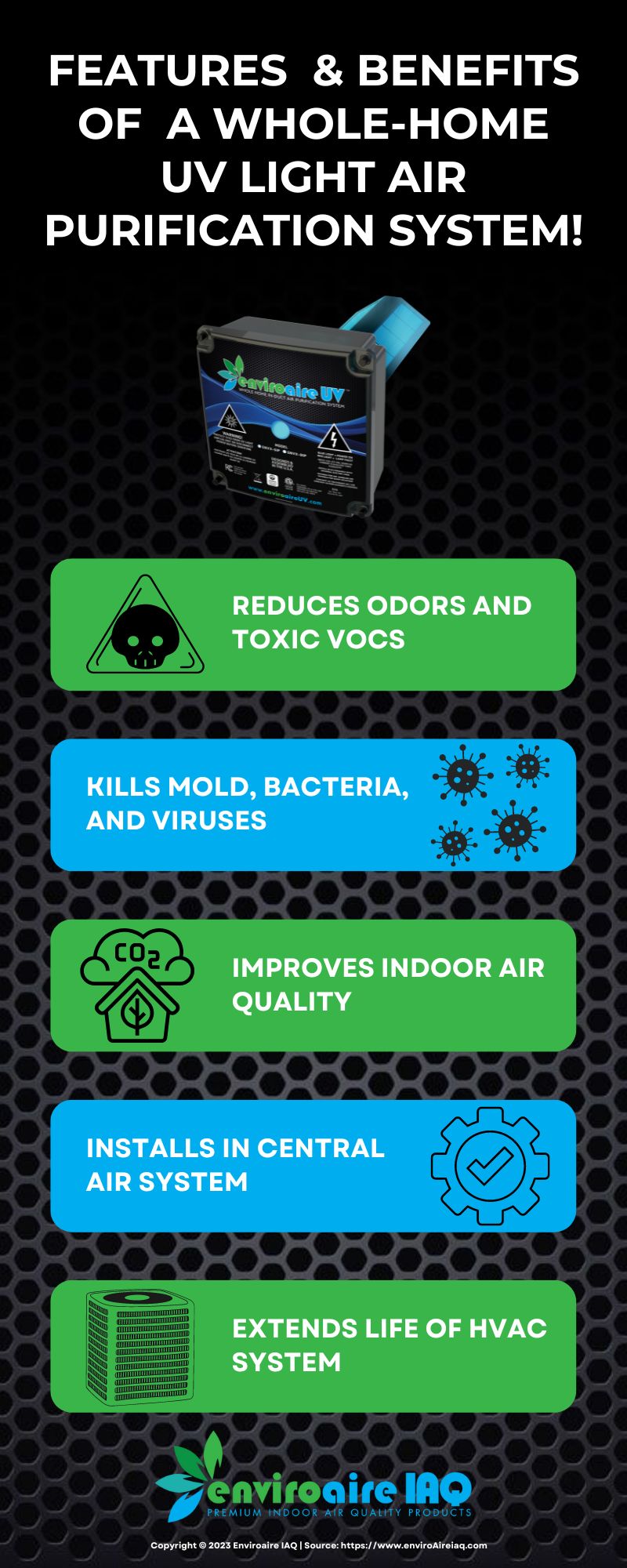10 Easy Facts About Uvc Light Described
10 Easy Facts About Uvc Light Described
Blog Article
Getting My Uvc Light To Work
Table of ContentsWhat Does Uvc Light Mean?Uvc Light Fundamentals ExplainedExamine This Report on Uvc LightUvc Light for DummiesNot known Facts About Uvc LightThe Only Guide for Uvc Light
A new kind of ultraviolet light that may be secure for people took less than five minutes to reduce the degree of interior air-borne germs by greater than 98%, a joint research by researchers at Columbia University Vagelos College of Physicians and Surgeons and in the U.K. has discovered. Even as microorganisms remained to be sprayed into the room, the degree continued to be extremely reduced as lengthy as the lights were on.Up until now these studies had only been conducted in tiny speculative chambers, not in full-sized areas imitating real-world problems. In the present study, researchers at the College of St. Andrews, University of Dundee, University of Leeds, and Columbia College examined the effectiveness of far-UVC light in a huge room-sized chamber with the exact same ventilation rate as a regular home or workplace (concerning 3 air adjustments per hour).
The effectiveness of different techniques to minimizing indoor virus levels is generally determined in regards to comparable air changes per hour. In this research, far-UVC lamps produced the matching of 184 equivalent air exchanges per hour. This goes beyond any various other strategy to sanitizing busy interior spaces, where 5 to 20 equivalent air adjustments per hour is the very best that can be attained virtually.
Little Known Facts About Uvc Light.

The major specifications of UV-C disinfection are wavelength, dosage, family member moisture, and temperature level. There is no agreement regarding their optimum worths, yet, as a whole, light at a high dosage and a spectrum of wavelengths having 260 nm is chosen in a setting at room temperature with low family member moisture. This light can be produced by mercury-vapour, light-emitting diode (LED), pulsed-xenon, or excimer lamps.
There are health and security threats connected with the UV-C modern technology when utilized in the closeness of people. UV-C disinfection systems have encouraging functions and the potential to improve in the future. Explanations surrounding the various parameters influencing the modern technologies' efficiency in medical facility atmosphere are required. UV-C sanitation need to currently be taken into consideration for low-level instead than top-level sanitation.
Another application occurred in 1910 when UV light was used to decontaminate water. However, the modern technology was not very trusted at the time and it took even more technical advancements before UV water sanitation ended up being popular once again in the 1950s [ 2] Nowadays, UV light is made use of for water, air, food, surface, and medical equipment disinfection.
Top Guidelines Of Uvc Light
DNA, RNA, or healthy proteins of a micro-organism soak up UV light, with a peak absorbance around 260 nm [6] This leads to the interruption of DNA or RNA, bring about the inactivation of the micro-organism. UV-C-induced DNA disruption commonly contains the bonding of two adjoining thymine (or cytosine) bases rather than the standard linking of a base with its complementary base upon the various other strand.

Dark repair work, on the various other hand, needs numerous enzymes and nutrients for energy [6] It is essential to recognize whether last inactivation outcomes have thought about the event of reactivation considering that it may learn the facts here now lead to 60% of the attained inactivation being reversed [7] Mutations can emerge upon UV-C direct exposure since this exposure can result in the source of intra-strand cyclobutyl-pyrimidine dimers in DNA [ find more information 6] The UV-C zone is made use of for disinfection but there is no agreement on the precise ideal wavelength. Bacterial DNA and RNA have peak absorbances of light at 260265 nm and around 260 nm, specifically [6] Therefore light at 260 nm can create one of the most disturbance. However, different micro-organisms are most at risk to a little various wavelengths.
A Biased View of Uvc Light
On the other hand, it has technical ramifications since the total power of the light beam is then split over all present wavelengths. A micro-organism that is vulnerable to 254 nm light will certainly be inactivated extra by a light that discharges only light at 254 nm than a light that discharges a wavelength spectrum at equivalent overall power.
Direct exposure times of 1045 min for area disinfection and 25 s to 5 minutes for medical equipment were experienced in literature.
Further, the outcome of a light reduces gradually, so it is advised to determine the dosage at the end of light life, which is representative of a worst-case situation. The dose also influences the quantity of photoreactivation. Quek et al. found that the percentage of photoreactivation decreased from 5.31% to 0% for an increase in dosage from 1.6 to 19.7 mJ/cm2 [8]
The influence of temperature level depends on the light resource.
The Basic Principles Of Uvc Light


This is recognized as far UV-C modern technology and is a fairly new sanitation my site technique with restricted expertise about its performance.
In study, the results on pulsed versus continual UV-C disinfection performance vary. When comparing pulsed and continual light it is necessary to keep various other variables such as wavelength and dose constant. Nyangaresi et al. and Sholtes et al. both located that pulsed or continual light given off by LEDs resulted in similar log10 reductions [15,28]
The Facts About Uvc Light Uncovered
In instance ozone is not required for sanitation, a modified light can be utilized. For mercury-vapour lamps, drugged quartz glass or specialized soft glass can filter out short-wave UV-C light. For pulsed-xenon, drugged quartz can be made use of also [30] UV-C has appealing features for disinfection such as automatic disinfection, being less time-consuming than extensively used manual or chemical disinfections, leaving no unsafe residuals, and being eco-friendly (if no mercury-vapour lamps are used) [31,32]
Report this page